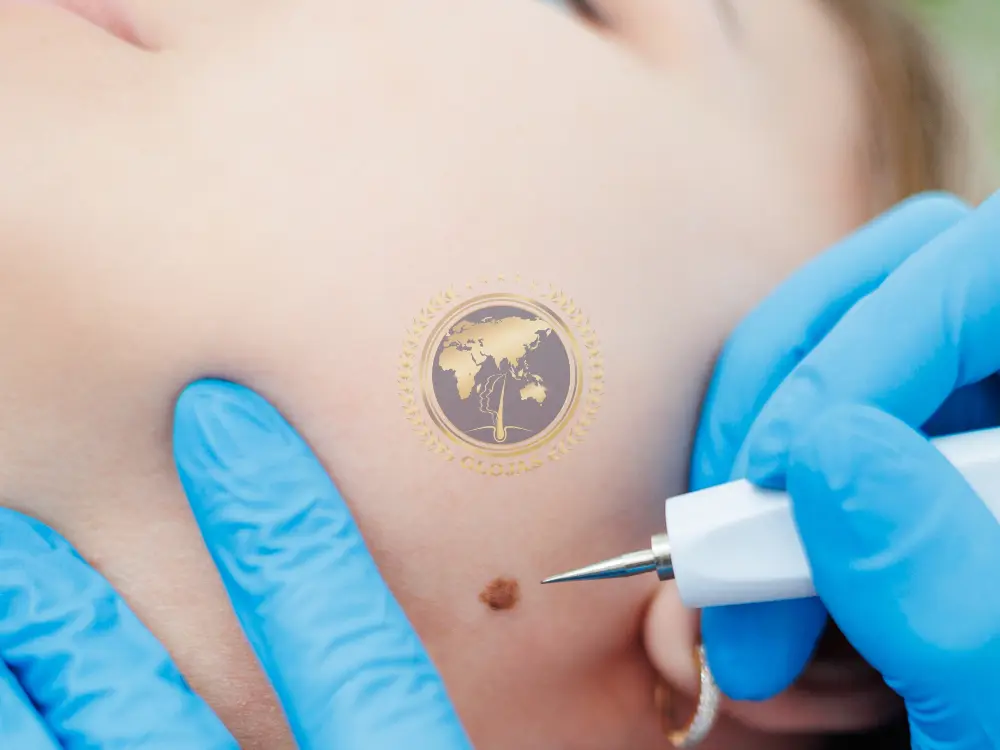Birthmarks are a common skin condition that can vary widely in size, shape, and color. While some people embrace their birthmarks as unique features, others may feel self-conscious and look for ways to remove them. If you’re interested in learning how to remove birthmark, this article will explore five proven methods that can help you achieve clearer, more even-toned skin. We’ll also discuss the pros and cons of each method to help you make an informed decision.
Understanding Birthmarks: What Are They?
Birthmarks are areas of discolored skin that are present at birth or develop shortly afterward. They can be caused by various factors, including an overgrowth of blood vessels, pigmentation irregularities, or other skin cell abnormalities. While most birthmarks are harmless, some may cause discomfort or become a cosmetic concern.
Types of Birthmarks
Birthmarks are generally categorized into two main types: vascular and pigmented.
- Vascular Birthmarks: These are caused by abnormal blood vessels under the skin and include types such as port-wine stains, hemangiomas, and salmon patches. Vascular birthmarks are typically red, pink, or purple.
- Pigmented Birthmarks: These are caused by an excess of pigment cells and include types such as café-au-lait spots, Mongolian spots, and moles. Pigmented birthmarks are usually brown, tan, or blue-gray.
1. Laser Therapy: A Precision Approach to Birthmark Removal
Laser therapy is one of the most effective methods to remove birthmark, particularly vascular types like port-wine stains. The treatment uses concentrated beams of light to target the blood vessels or pigment in the birthmark, gradually breaking them down without damaging the surrounding skin.
Benefits of Laser Therapy
- Non-invasive: Laser therapy is a non-invasive procedure, meaning no incisions or needles are required.
- Minimal Downtime: Most people can return to their normal activities shortly after the treatment.
- Effective for Various Birthmarks: Laser therapy can be tailored to treat different types of birthmarks, including both vascular and pigmented.
Considerations
- Multiple Sessions May Be Needed: Depending on the size and type of birthmark, several treatment sessions may be necessary to achieve the desired results.
- Temporary Side Effects: Some people may experience redness, swelling, or minor bruising after the treatment, but these effects typically subside within a few days.
2. Surgical Removal: A Permanent Solution for Large or Raised Birthmarks
For larger or raised birthmarks, surgical removal may be the most effective option. This procedure involves cutting out the birthmark and stitching the skin back together. It’s typically used for moles or other raised pigmented birthmarks that are difficult to treat with lasers.
Advantages of Surgical Removal
- Permanent Removal: Surgical removal offers a permanent solution, as the birthmark is completely excised.
- Quick Procedure: The surgery is usually performed on an outpatient basis and takes only a short amount of time.
Drawbacks
- Scarring: As with any surgical procedure, there is a risk of scarring. However, a skilled surgeon can minimize this risk by carefully stitching the wound.
- Recovery Time: Unlike non-invasive methods, surgical removal requires a recovery period, during which you may need to take extra care of the treated area.
3. Topical Treatments: A Gradual Approach to Lightening Birthmarks
Topical treatments, such as bleaching creams and retinoids, can be used to lighten pigmented birthmarks. These treatments work by gradually reducing the concentration of pigment in the affected area, leading to a lighter appearance over time.
Benefits of Topical Treatments
- Non-invasive: Topical treatments are applied directly to the skin, making them a non-invasive option.
- Gradual Results: For those who prefer a subtle change, topical treatments offer a slow and steady improvement.
Limitations
- Requires Consistency: Topical treatments must be used consistently over a period of weeks or months to see noticeable results.
- Effectiveness Varies: The effectiveness of topical treatments can vary depending on the type and color of the birthmark.
4. Cryotherapy: Freezing Away Small Birthmarks
Cryotherapy is a treatment that uses extreme cold to freeze and destroy abnormal skin cells. This method is most commonly used to remove small, superficial birthmarks such as certain types of moles or skin tags.
Pros of Cryotherapy
- Quick and Simple: Cryotherapy is a relatively quick procedure that can be done in a doctor’s office.
- Minimal Scarring: Because it targets only the abnormal skin cells, cryotherapy usually results in minimal scarring.
Cons
- Not Suitable for All Birthmarks: Cryotherapy is generally not effective for larger or deeper birthmarks.
- Multiple Treatments: Like laser therapy, multiple cryotherapy sessions may be needed to completely remove the birthmark.
5. Chemical Peels: Exfoliating Away Pigmented Birthmarks
Chemical peels involve applying a solution to the skin that causes the top layers to peel away, revealing fresh, new skin underneath. This method is often used to lighten pigmented birthmarks such as café-au-lait spots.
Advantages of Chemical Peels
- Improves Skin Texture: In addition to lightening birthmarks, chemical peels can improve the overall texture and tone of your skin.
- Customizable: The strength of the peel can be adjusted depending on the depth and size of the birthmark.
Disadvantages
- Temporary Discomfort: Some people experience redness, stinging, or peeling after the procedure, but these effects are usually temporary.
- Multiple Sessions Required: Similar to other non-invasive methods, multiple chemical peels may be necessary for optimal results.
FAQs About Birthmark Removal
Is Birthmark Removal Painful?
Most birthmark removal procedures involve minimal discomfort. Non-invasive treatments like laser therapy or cryotherapy may cause a mild stinging sensation, while surgical removal is performed under local anesthesia.
Can All Birthmarks Be Removed?
Most birthmarks can be treated or removed, but the method and success rate depend on the type, size, and depth of the birthmark. It’s essential to consult with a dermatologist to determine the best approach.
Are There Any Risks Associated with Birthmark Removal?
As with any medical procedure, there are some risks, including scarring, infection, or changes in skin pigmentation. However, these risks are generally low when the procedure is performed by a qualified professional.
How Long Does It Take to See Results?
The time it takes to see results varies depending on the treatment method. Laser therapy and cryotherapy may show improvements after a few sessions, while topical treatments and chemical peels may take several weeks or months.
Is Birthmark Removal Covered by Insurance?
Insurance coverage for birthmark removal depends on whether the procedure is deemed medically necessary. Cosmetic procedures are typically not covered, so it’s important to check with your insurance provider.
What Should I Expect During the Recovery Process?
Recovery varies depending on the treatment method. Non-invasive procedures generally have little to no downtime, while surgical removal may require a short recovery period with specific aftercare instructions.
Removing a birthmark is a personal decision that should be made after careful consideration and consultation with a dermatologist. Whether you choose a non-invasive method like laser therapy or a more permanent solution like surgical removal, there are effective options available to help you achieve clearer, more even-toned skin.



